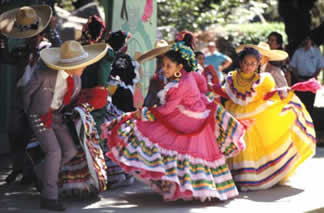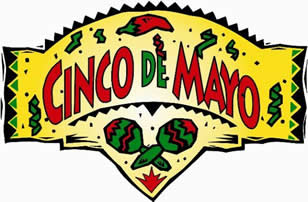What is Cinco de Mayo?
 The holiday commemorates an initial victory of Mexican forces led by General Ignacio Zaragoza SeguÃn over French forces in the Battle of Puebla on May 5, 1862.
The holiday commemorates an initial victory of Mexican forces led by General Ignacio Zaragoza SeguÃn over French forces in the Battle of Puebla on May 5, 1862.
However, the Mexican victory at Puebla only delayed the French invasion of Mexico City, and a year later, the French occupied Mexico. The French occupying forces placed Maximilian I, Emperor of Mexico on the throne of Mexico; Maximillian and the French were eventually defeated and expelled in 1867 (Maximilian was executed), five years after the Battle of Puebla.
A common misconception in the United States is that Cinco de Mayo is Mexico’s Independence Day; Mexico’s Independence Day is September 16 (dieciséis de septiembre in Spanish).
Cinco de Mayo is viewed as a relatively minor federal holiday in most of Mexico, and it is observed, if at all, in varying degrees. The holiday is celebrated vigorously in the city of Puebla, Puebla, where the battle was fought, and in the state of Puebla; celebration is more limited or non-existent in the rest of the country. For the most part the celebrations combine food, drink, music and dancing.
 In the United States, Cinco de Mayo has taken on a significance beyond that in Mexico. Commercial interests in the United States have capitalized on the celebration, advertising Mexican products and services, with an emphasis on beverages, foods, and music. The date is perhaps best recognized in the United States as a date to celebrate the culture and experiences of Americans of Mexican ancestry, much as St. Patrick’s Day, Oktoberfest, and the Chinese New Year are used to celebrate those of Irish, German, and Chinese ancestry, respectively. As a result, the holiday is observed by many Americans regardless of ethnic origins, especially in cities and states where there is a large population of Mexican ancestry. Although it is not an official holiday, many cities with large populations of Mexican ancestry honor the day as a symbolic representation of Mexican pride and as a representation of a culture that blends both Mexican and American roots. Celebrations tend to draw both from traditional Mexican symbols, such as the Virgin de Guadalupe, and from prominent figures of Mexican descent in the United States, such as César Chávez.
In the United States, Cinco de Mayo has taken on a significance beyond that in Mexico. Commercial interests in the United States have capitalized on the celebration, advertising Mexican products and services, with an emphasis on beverages, foods, and music. The date is perhaps best recognized in the United States as a date to celebrate the culture and experiences of Americans of Mexican ancestry, much as St. Patrick’s Day, Oktoberfest, and the Chinese New Year are used to celebrate those of Irish, German, and Chinese ancestry, respectively. As a result, the holiday is observed by many Americans regardless of ethnic origins, especially in cities and states where there is a large population of Mexican ancestry. Although it is not an official holiday, many cities with large populations of Mexican ancestry honor the day as a symbolic representation of Mexican pride and as a representation of a culture that blends both Mexican and American roots. Celebrations tend to draw both from traditional Mexican symbols, such as the Virgin de Guadalupe, and from prominent figures of Mexican descent in the United States, such as César Chávez.
The reference to the Battle of Puebla is seen perhaps as a symbolic cultural link to those who had to overcome significant odds while facing adversity. In such neighborhoods as East Los Angeles, the Mission District of San Francisco, East San Jose, all in California, and elsewhere throughout the Southwest, Cinco de Mayo is best characterized as a day of celebration to honor a culture that fuses Mexican heritage and American life experience. To celebrate, many display Cinco de Mayo banners while school districts hold special events to educate pupils about its historical significance. Special events and celebrations highlight Mexican culture, especially in its music and regional dancing. Examples include ballet folklórico and mariachi demonstrations held annually at the Plaza del Pueblo de Los Angeles, near Olvera Street.




